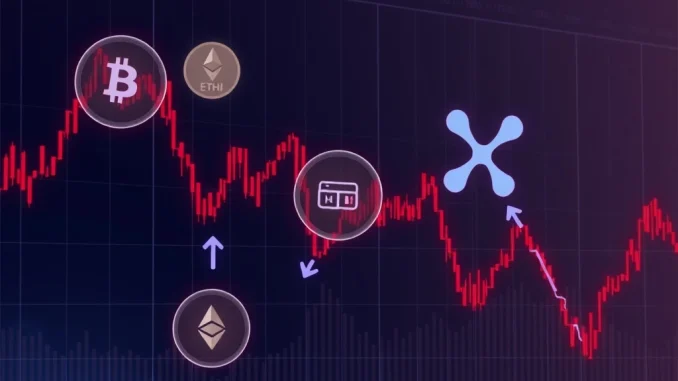
Keeping a close eye on the crypto market requires understanding key metrics, and one of the most telling is tracking crypto liquidations on perpetual futures exchanges. These events highlight moments of significant volatility and can offer insights into market sentiment. Over the past 24 hours, we’ve seen substantial liquidation volumes across major cryptocurrencies, revealing where leveraged traders faced the most pain.
Understanding Perpetual Futures and Liquidations
What exactly are perpetual futures? Unlike traditional futures contracts that have an expiry date, perpetual futures in crypto trading allow traders to hold leveraged positions indefinitely, provided they meet margin requirements. This flexibility makes them popular but also introduces significant risk.
A liquidation occurs when a trader’s position is automatically closed by the exchange because they no longer have sufficient margin to keep the trade open, typically due to adverse price movements. It’s essentially a forced exit that results in the loss of the trader’s margin.
Bitcoin Liquidations Lead the Pack
As often happens, Bitcoin (BTC) saw the largest volume of liquidations in the last 24 hours. The total figure reached a significant $124.19 million. What’s particularly interesting about these Bitcoin liquidations is the directional split: an overwhelming 80.83% were short positions.
This heavy skew towards short liquidations suggests that a rapid price increase caught many traders betting on a price decline off guard. When BTC’s price rose, these leveraged short positions became unprofitable, triggering automatic closures and contributing significantly to the total liquidation sum.
Ethereum Liquidations Show a Different Story
Following Bitcoin, Ethereum (ETH) also experienced substantial liquidations, totaling $104.39 million over the same period. However, the story here is different from BTC. For Ethereum liquidations, the majority, 60.84%, were long positions.
This indicates that while BTC’s movement squeezed shorts, ETH’s price action likely involved a dip or sideways movement that hurt traders leveraged on price increases. This divergence in liquidation direction between the two largest cryptocurrencies can sometimes signal shifting dynamics or coin-specific news impacting sentiment.
XRP Liquidations Add to the Volatility Picture
Rounding out the top three for the day, XRP saw $62.66 million in liquidations. The directional split for XRP liquidations was much closer to 50/50, with short positions slightly leading at 50.03%.
A near-even split in long and short liquidations for XRP suggests price volatility that moved significantly in both directions, catching traders on both sides of the market. While the total volume is lower than BTC and ETH, it still represents a considerable amount wiped out for leveraged traders.
Key Takeaways from the 24-Hour Data
Analyzing these liquidation figures provides valuable insights:
- Market Volatility: Over $290 million in total liquidations across just these three assets highlights the inherent volatility in the perpetual futures market.
- Directional Bias: The data clearly shows a strong short squeeze in Bitcoin, while Ethereum’s movement seemed to impact longs more heavily. XRP saw more balanced pain.
- Risk of Leverage: Liquidations are a stark reminder of the risks associated with high leverage in crypto trading. Small price movements can lead to significant losses.
Why This Data Matters for Traders
For active traders, monitoring liquidation data isn’t just about observing others’ losses. Large liquidation events can sometimes exacerbate price moves, creating cascading effects. Understanding where the market is leveraged can help anticipate potential squeeze opportunities or areas of potential instability.
Conclusion: Navigating the Volatile Waters
The past 24 hours underscore the dynamic nature of the crypto futures market. With over $290 million in crypto liquidations across BTC, ETH, and XRP, the data serves as a crucial indicator of recent price action and the risks involved in leveraged trading. Whether you’re trading perpetual futures or just observing the market, paying attention to these liquidation trends provides valuable context for understanding market sentiment and volatility.



